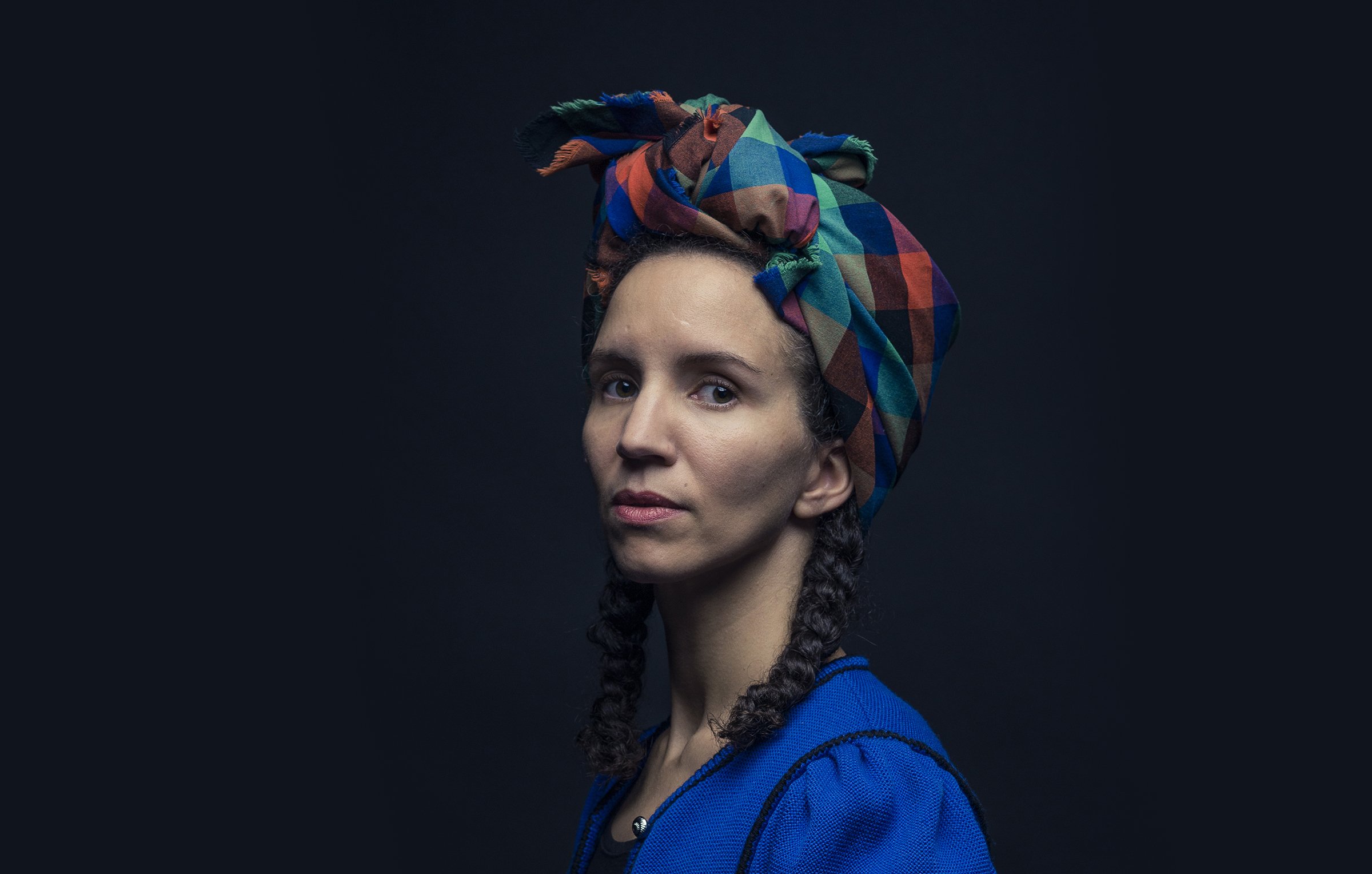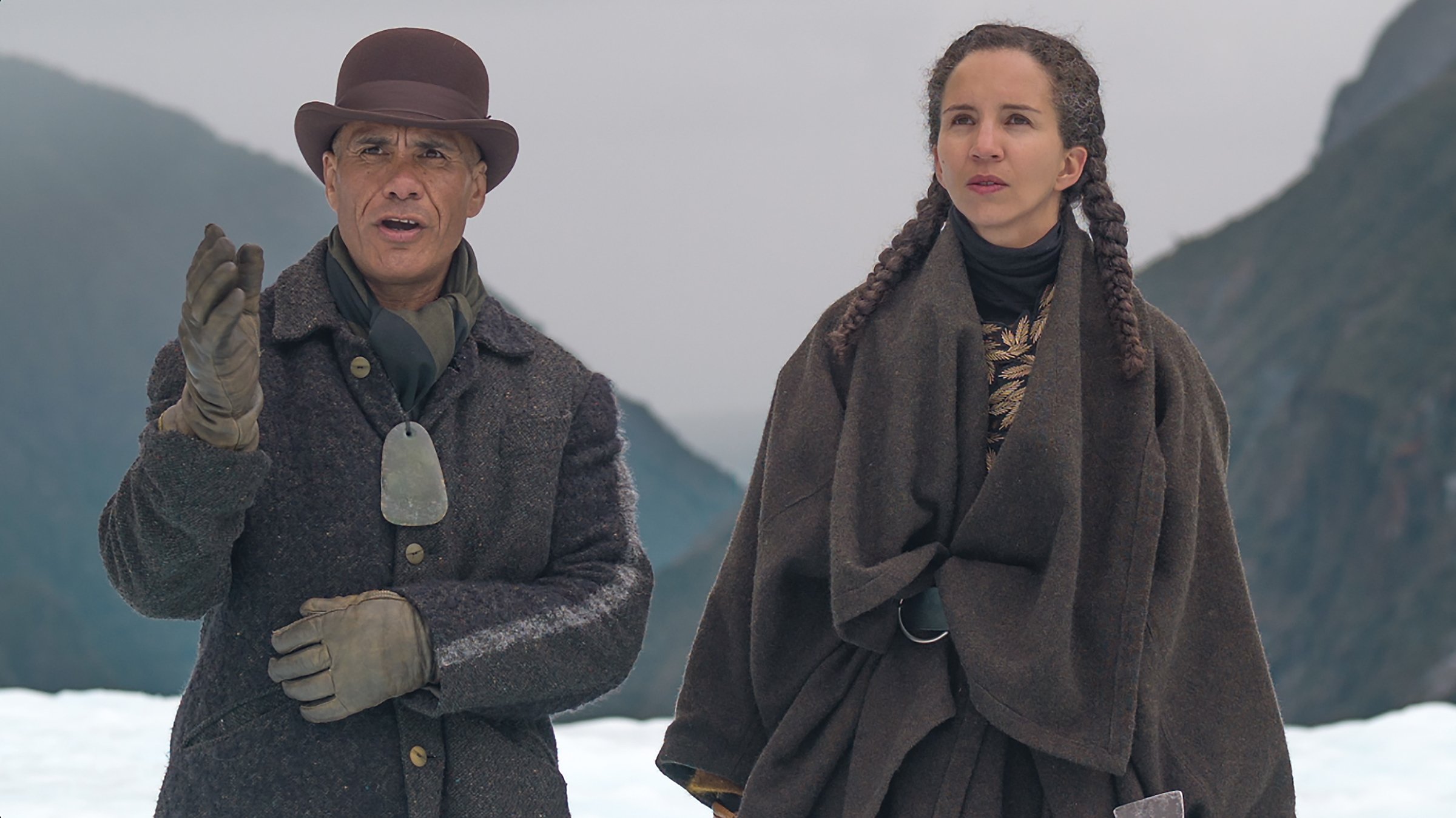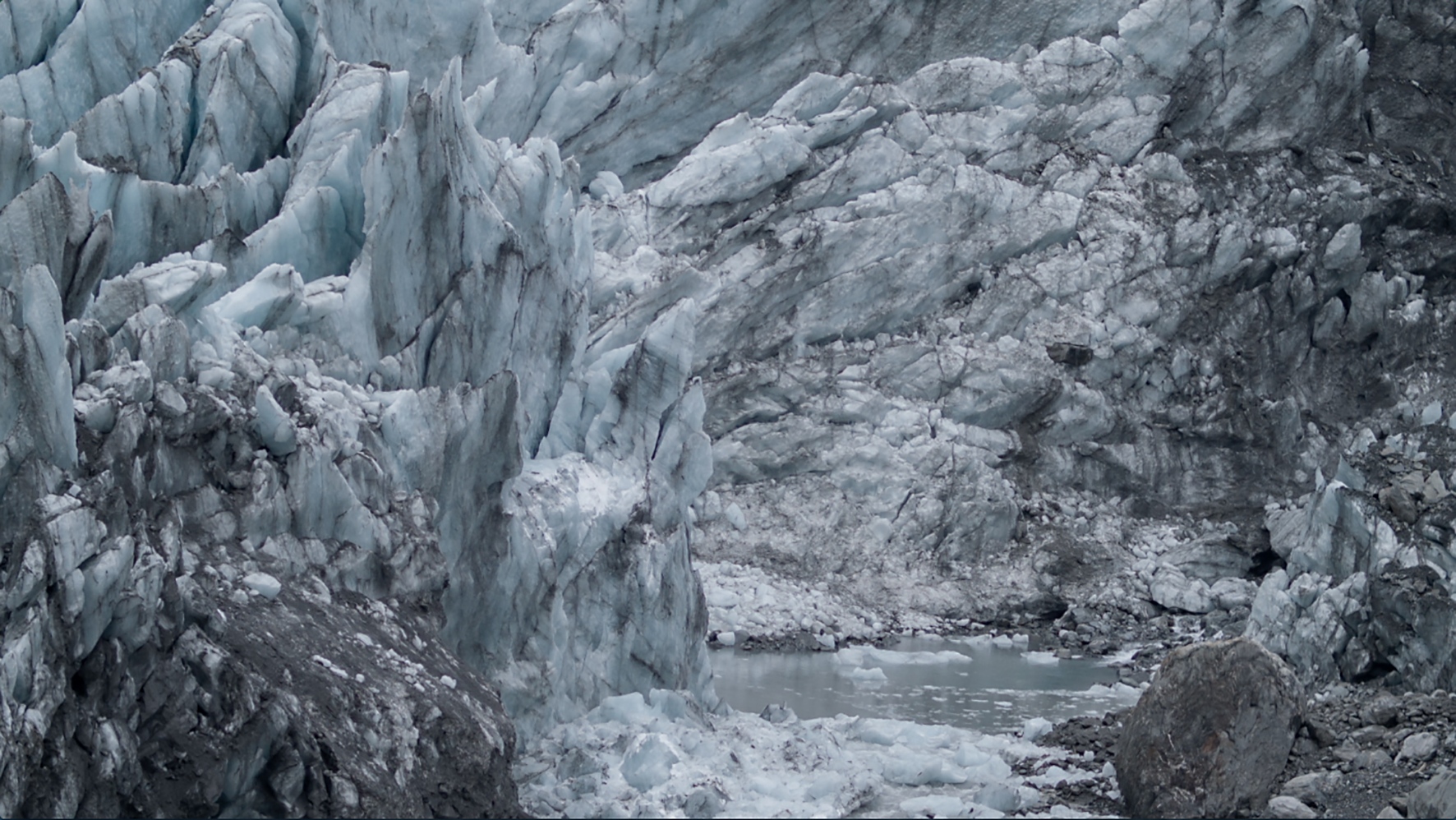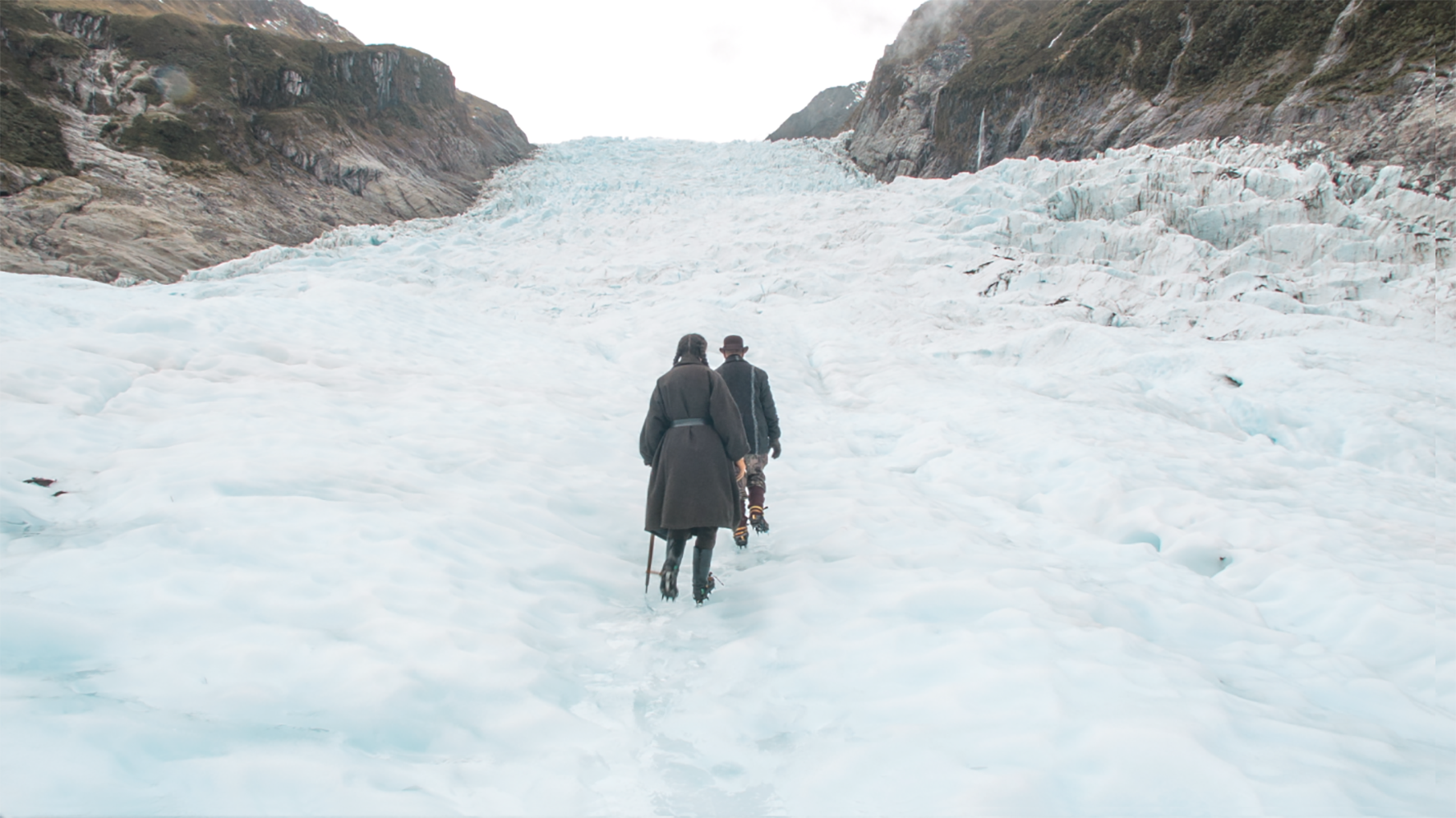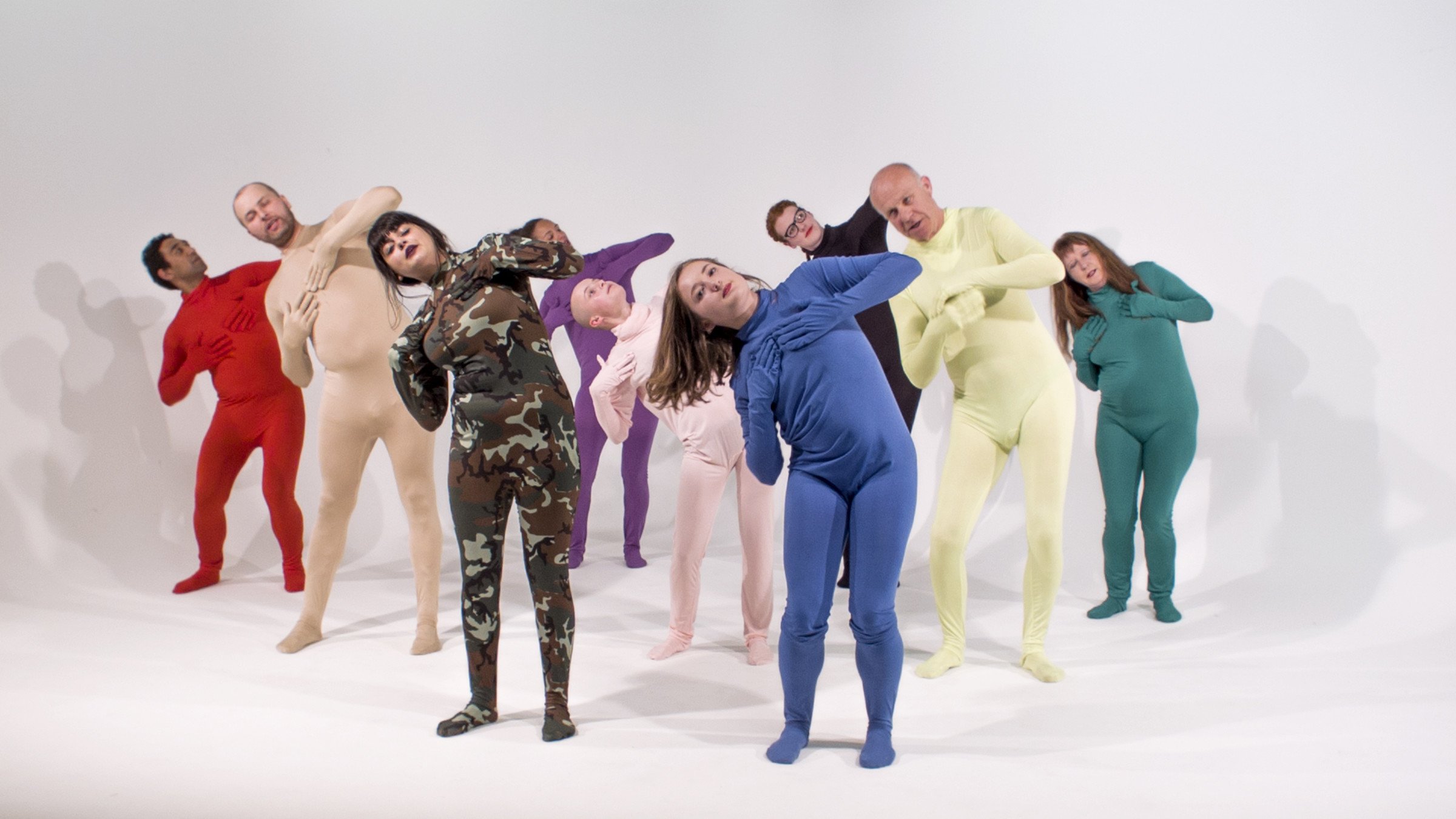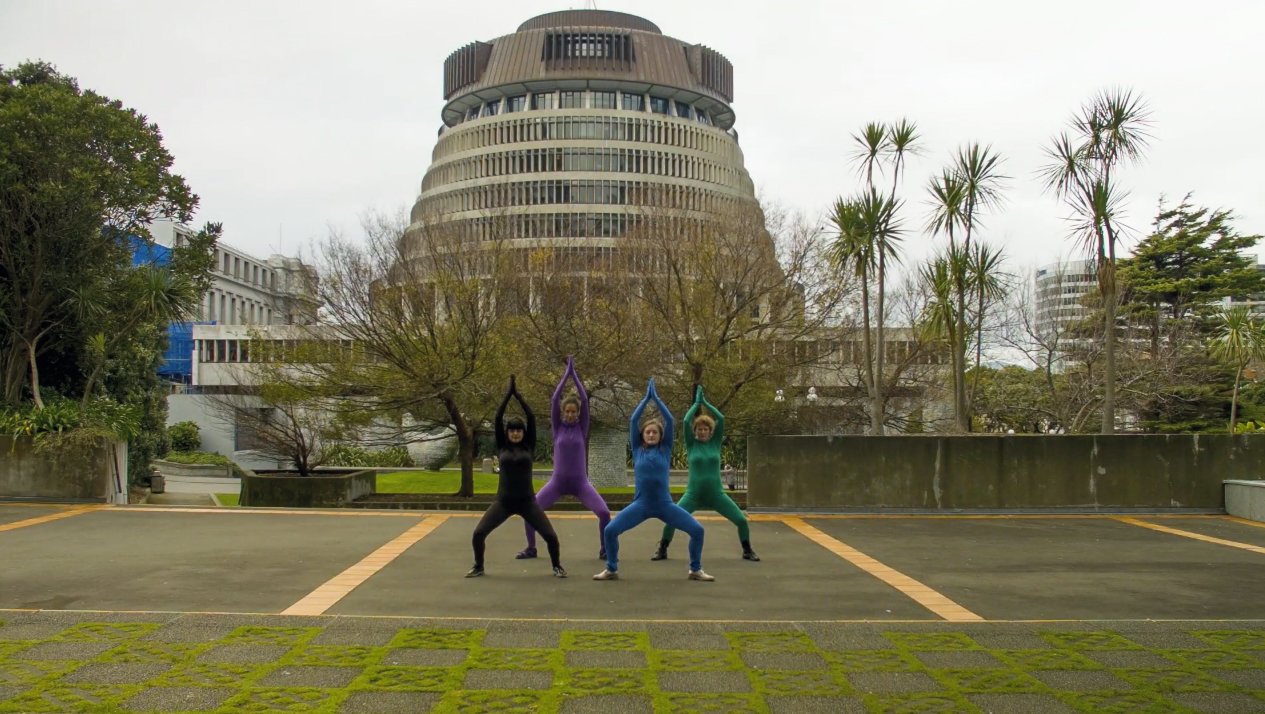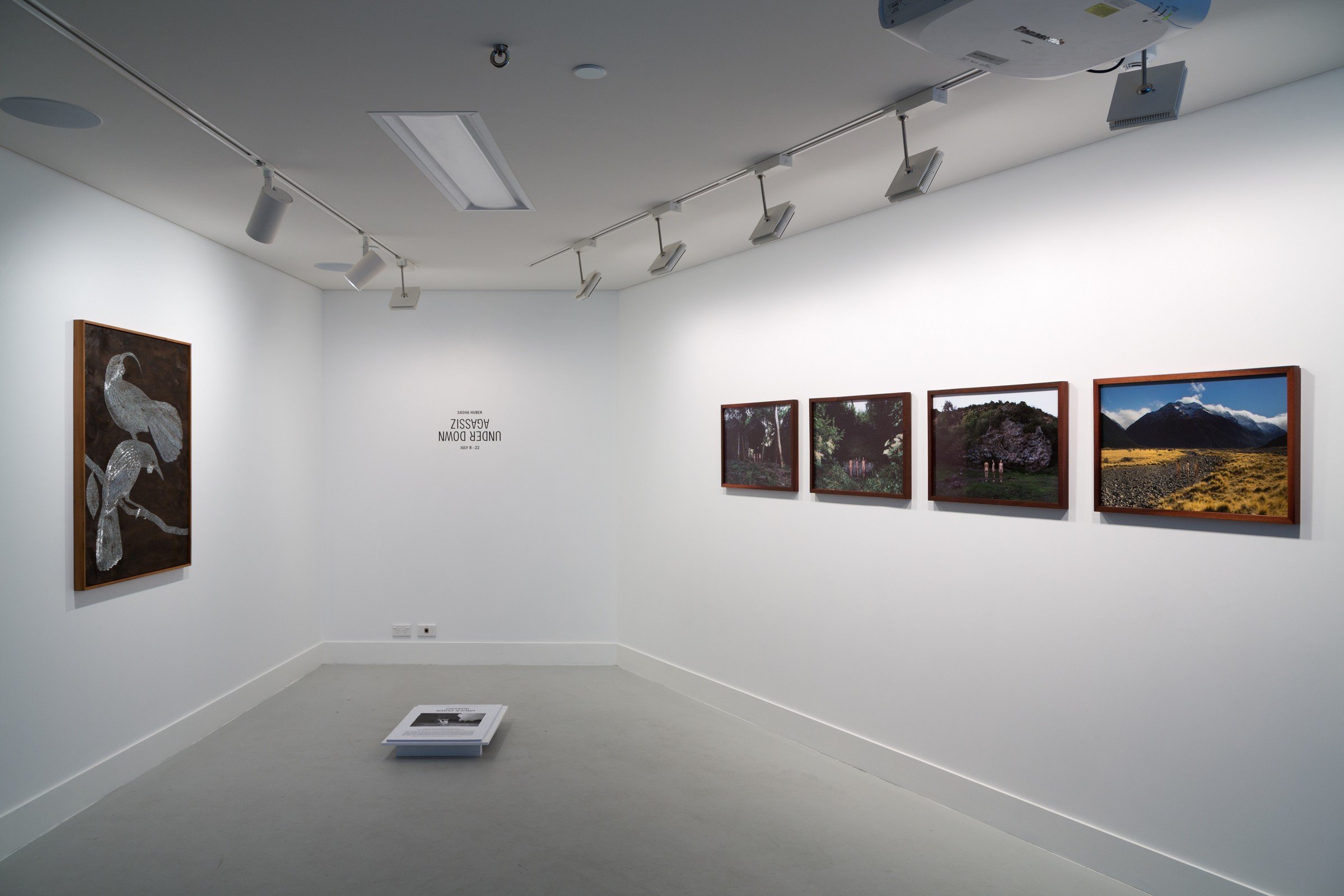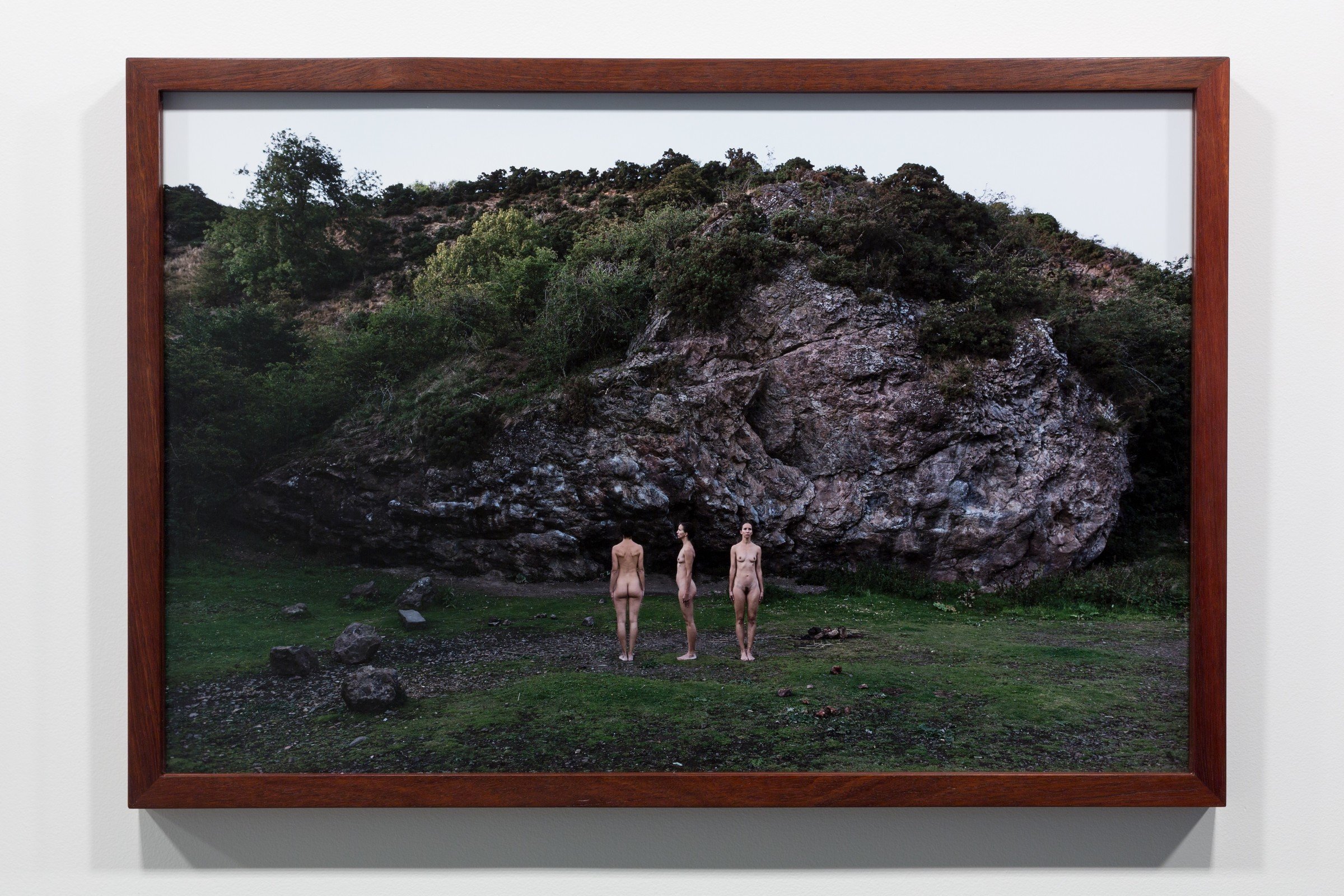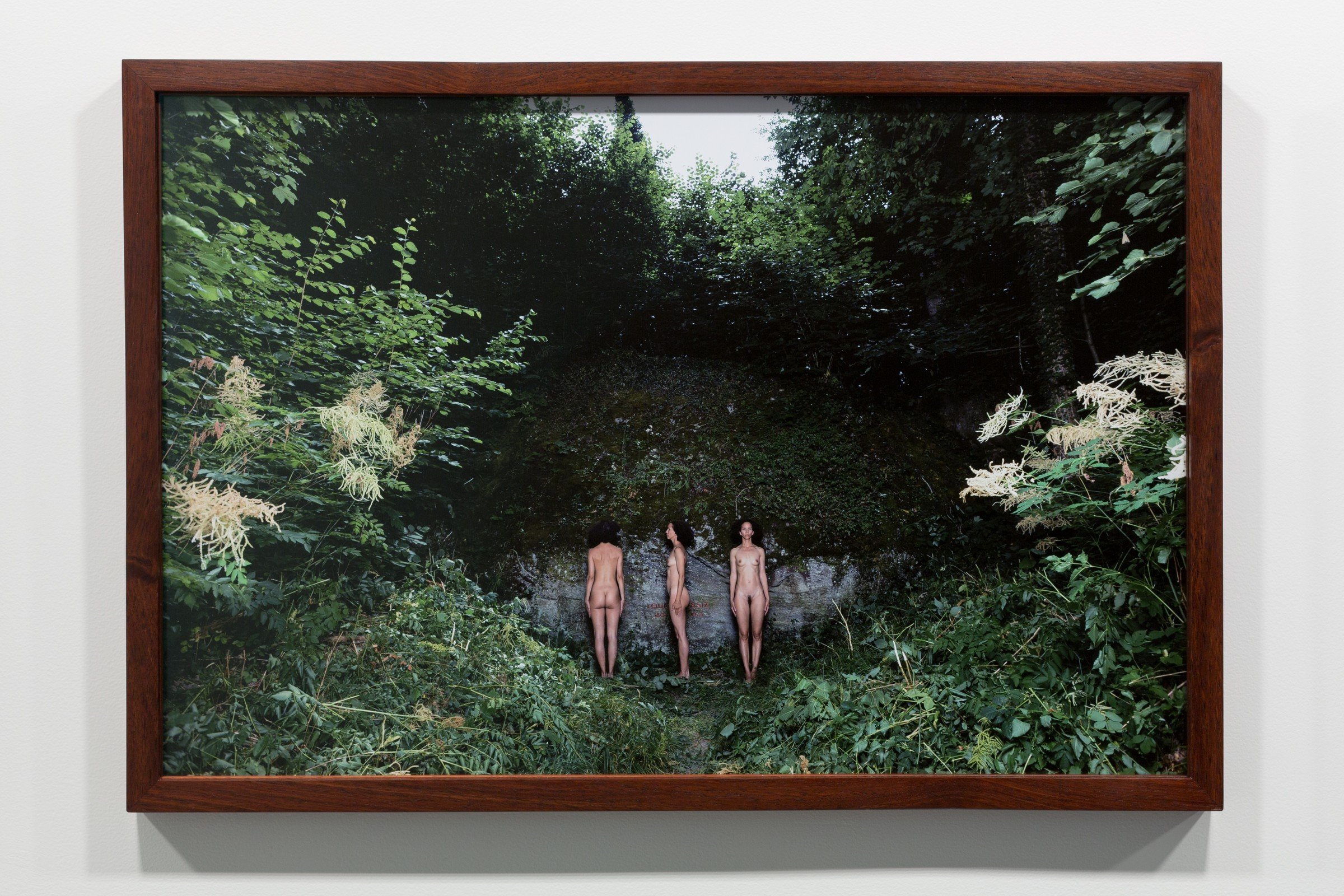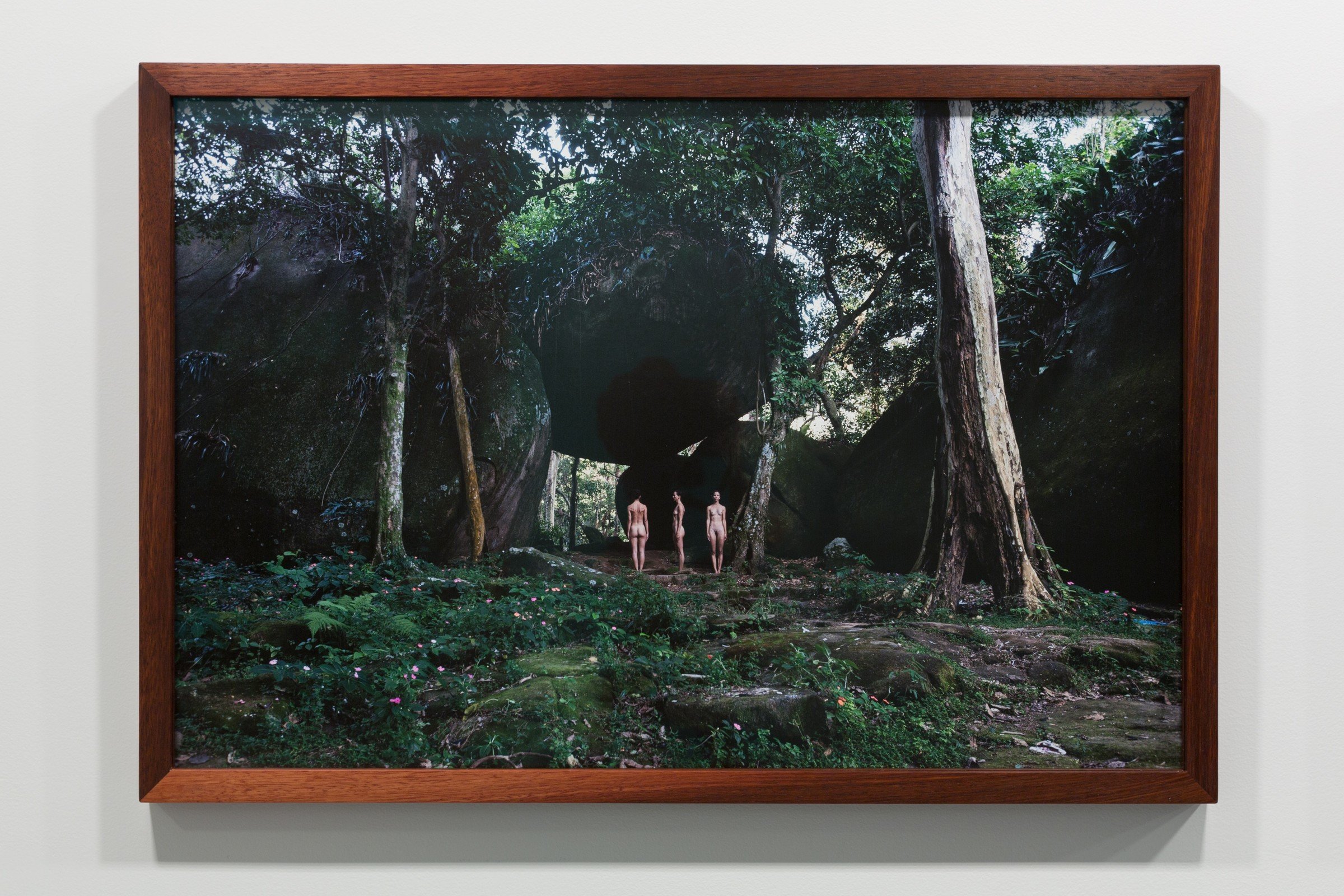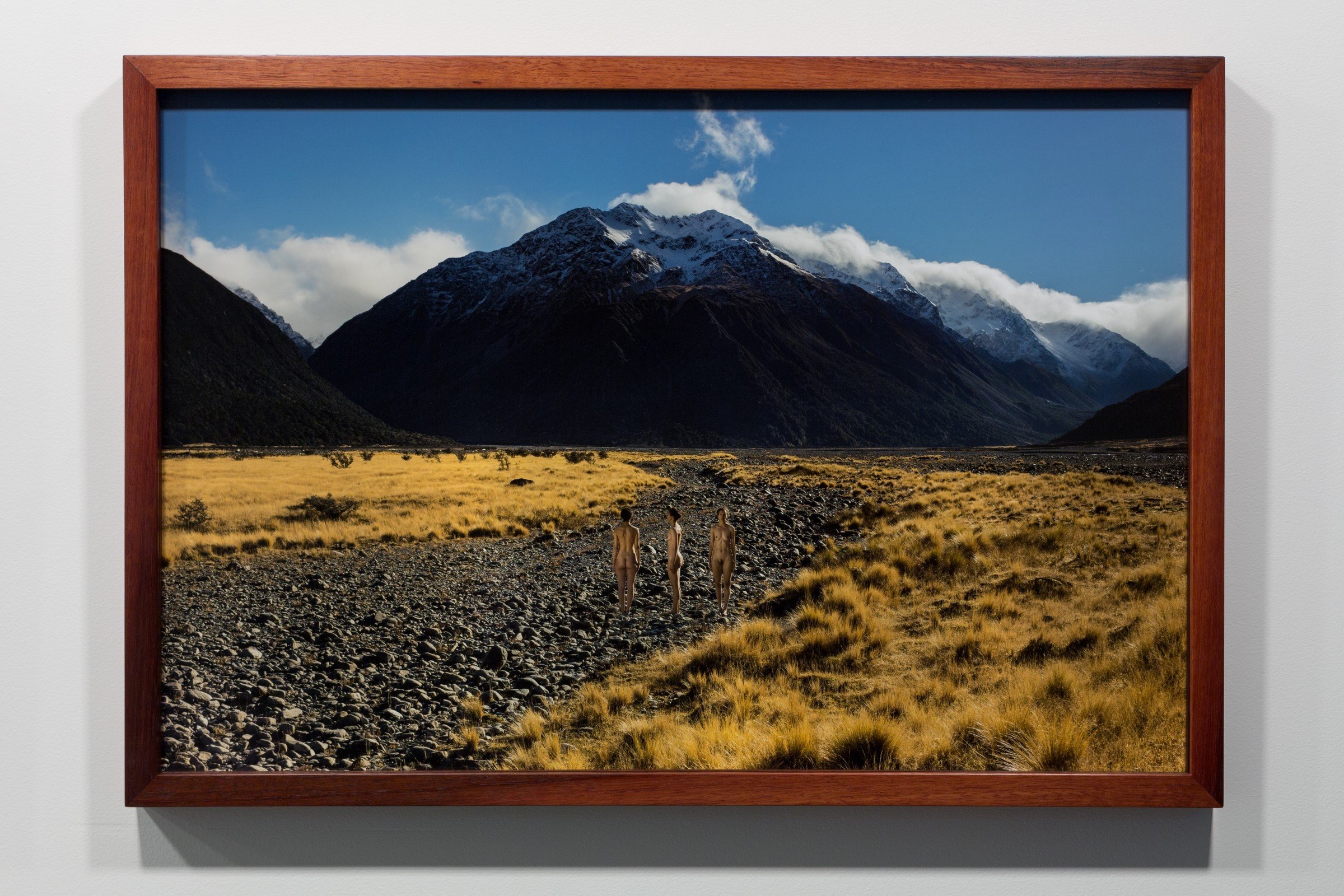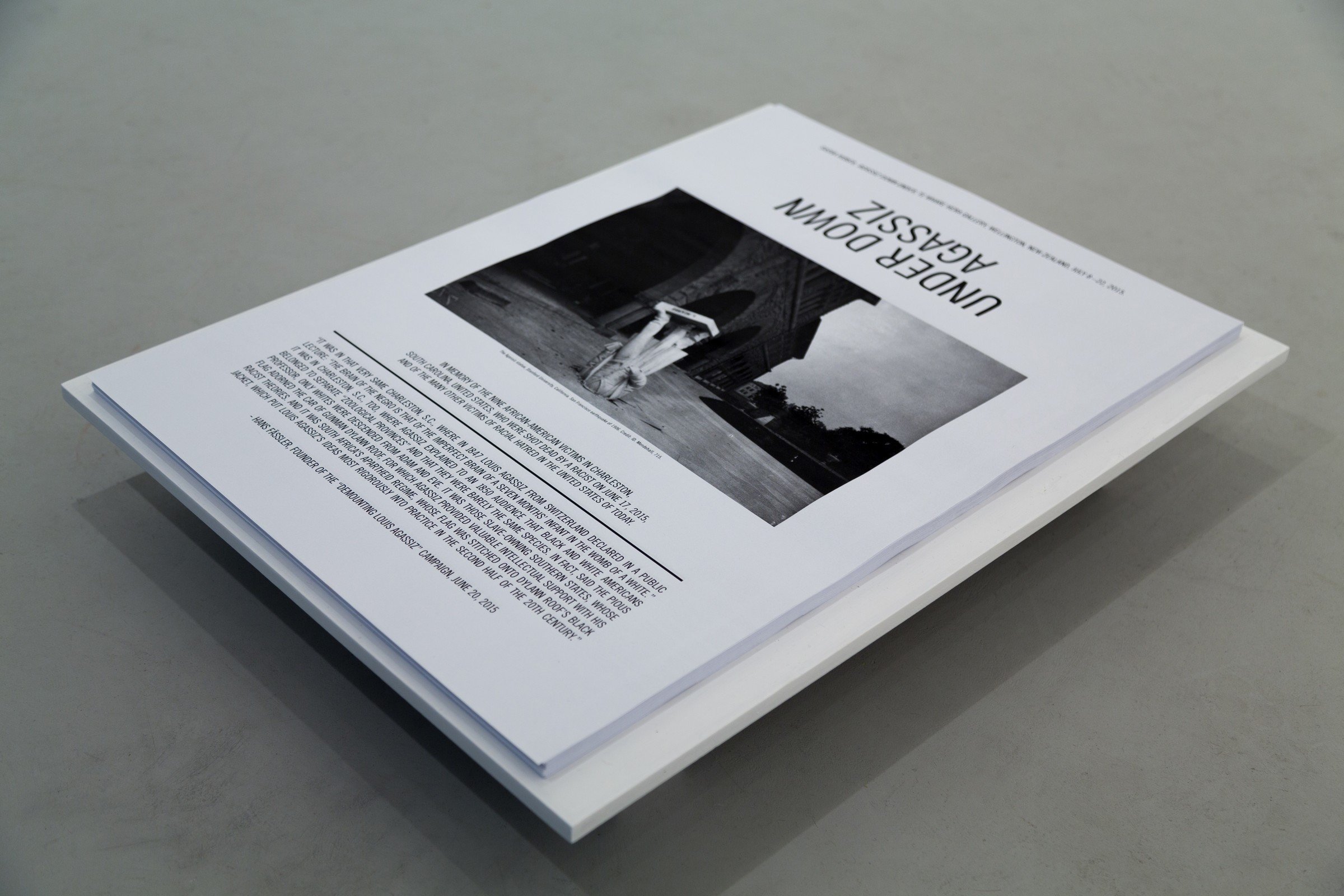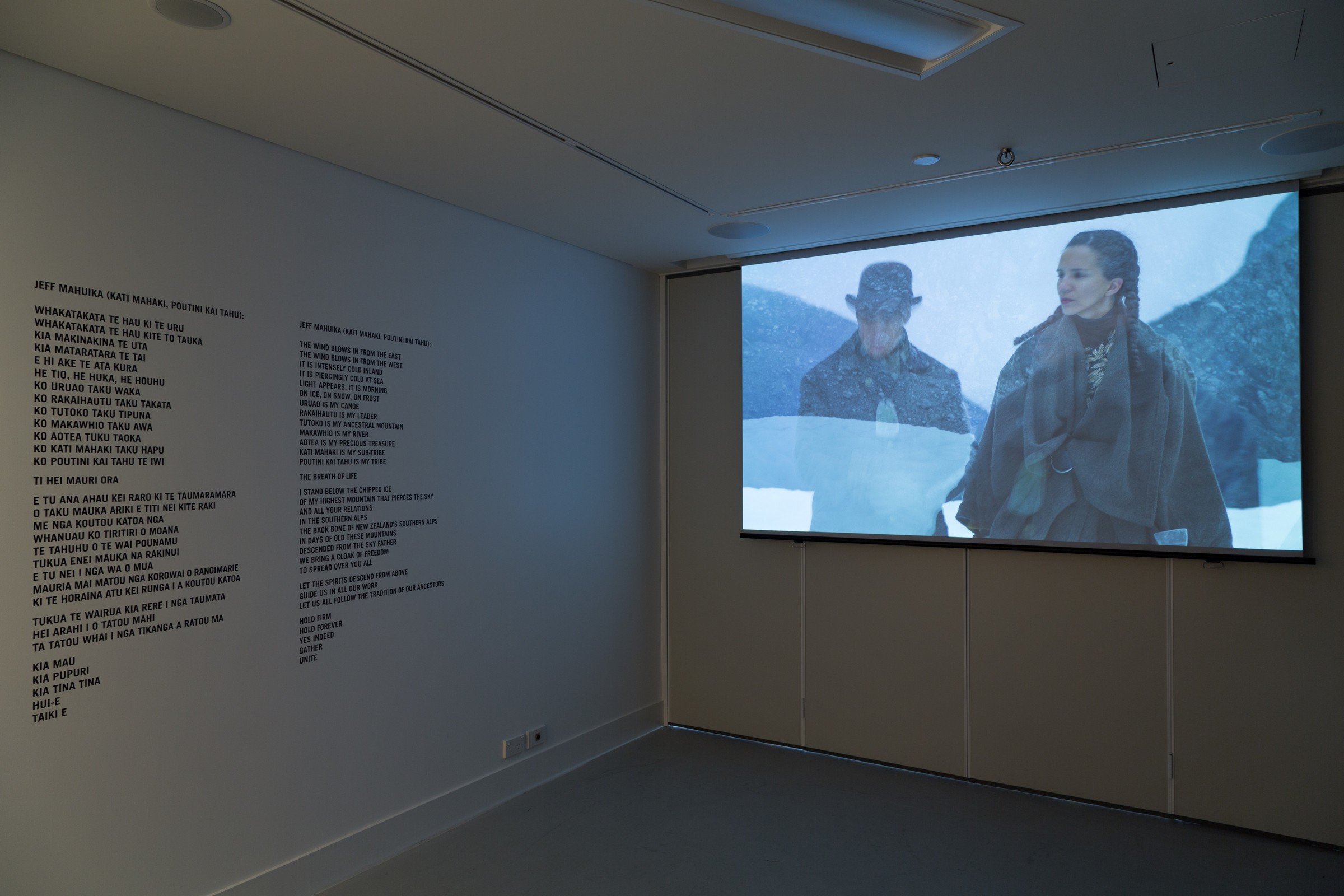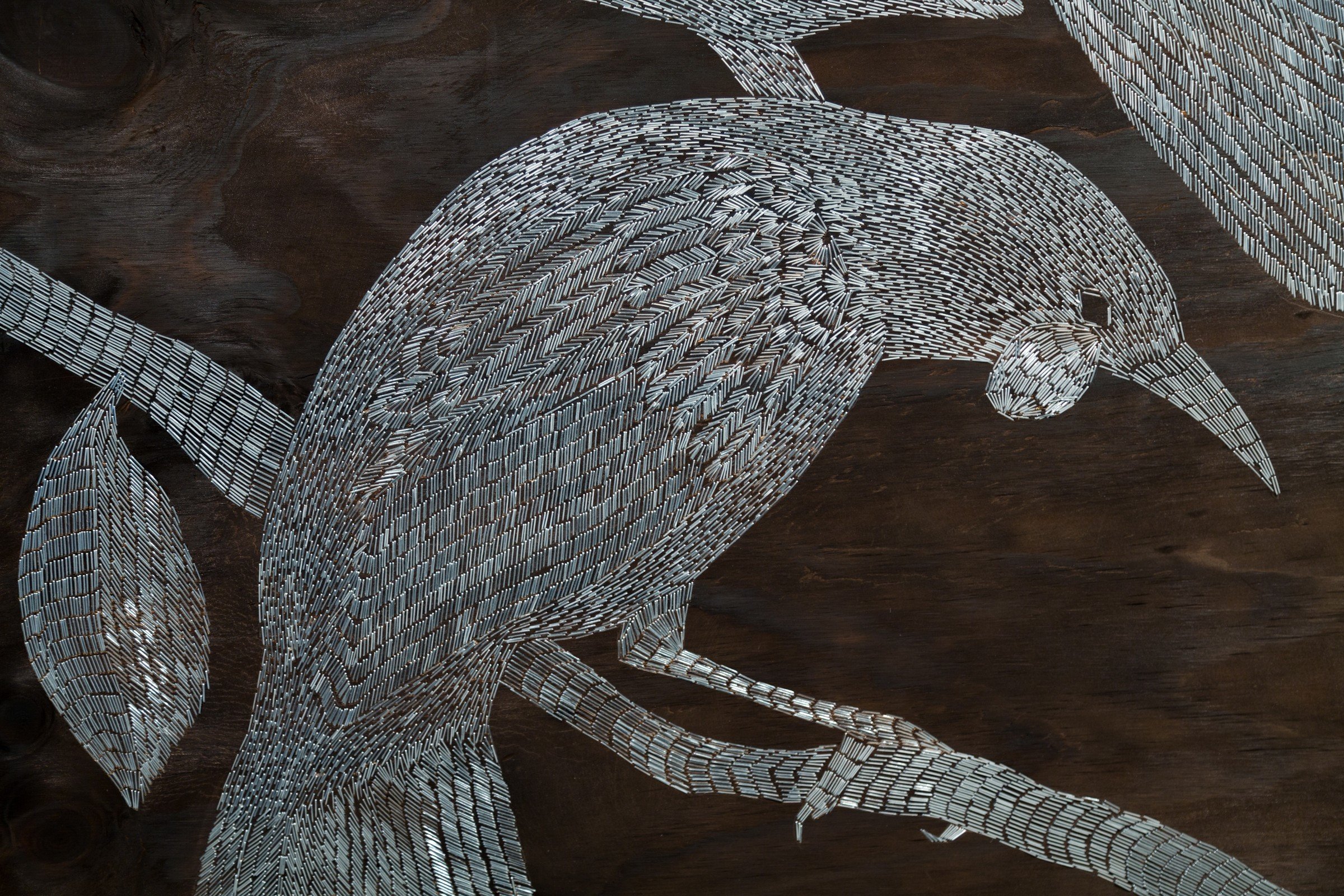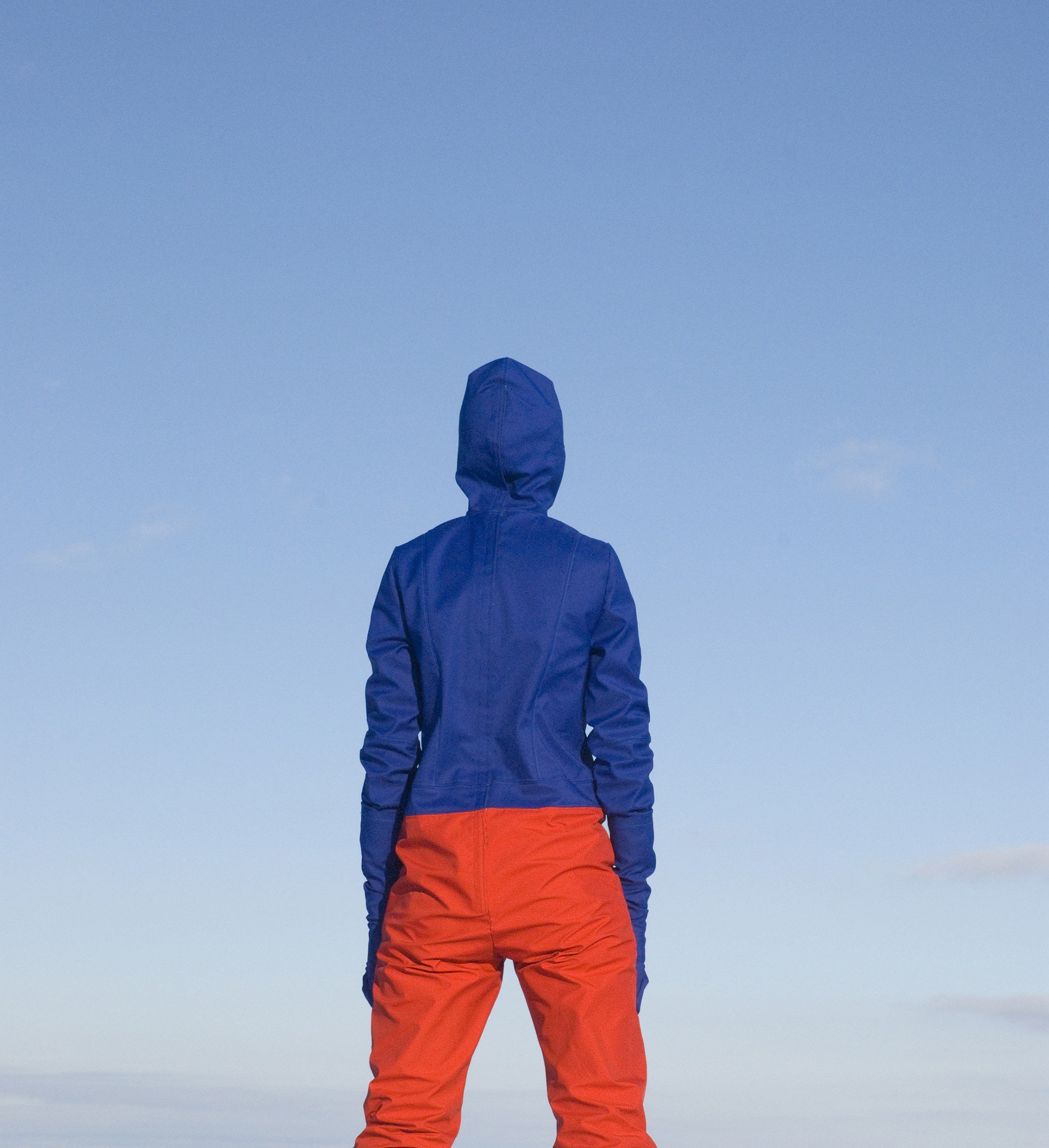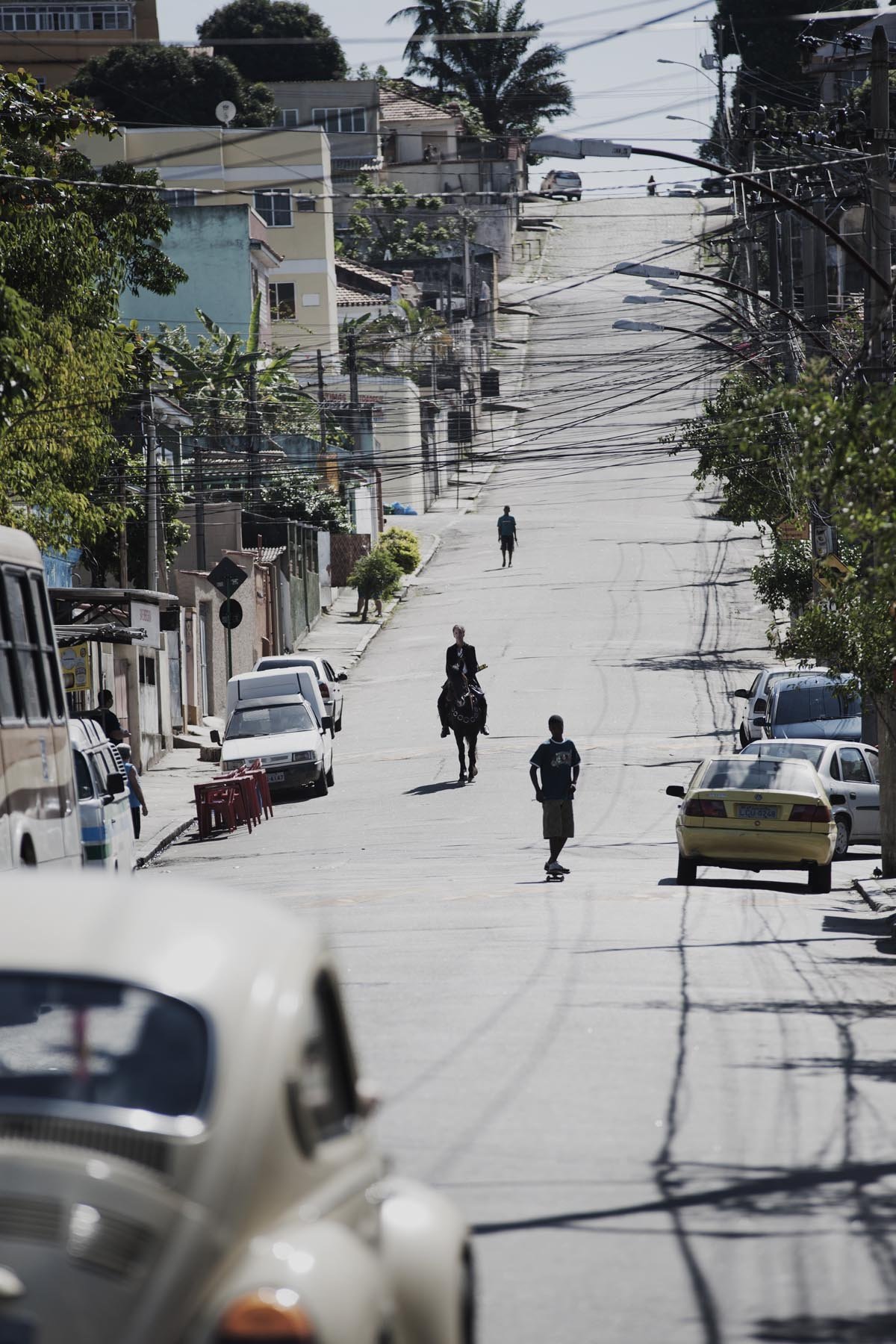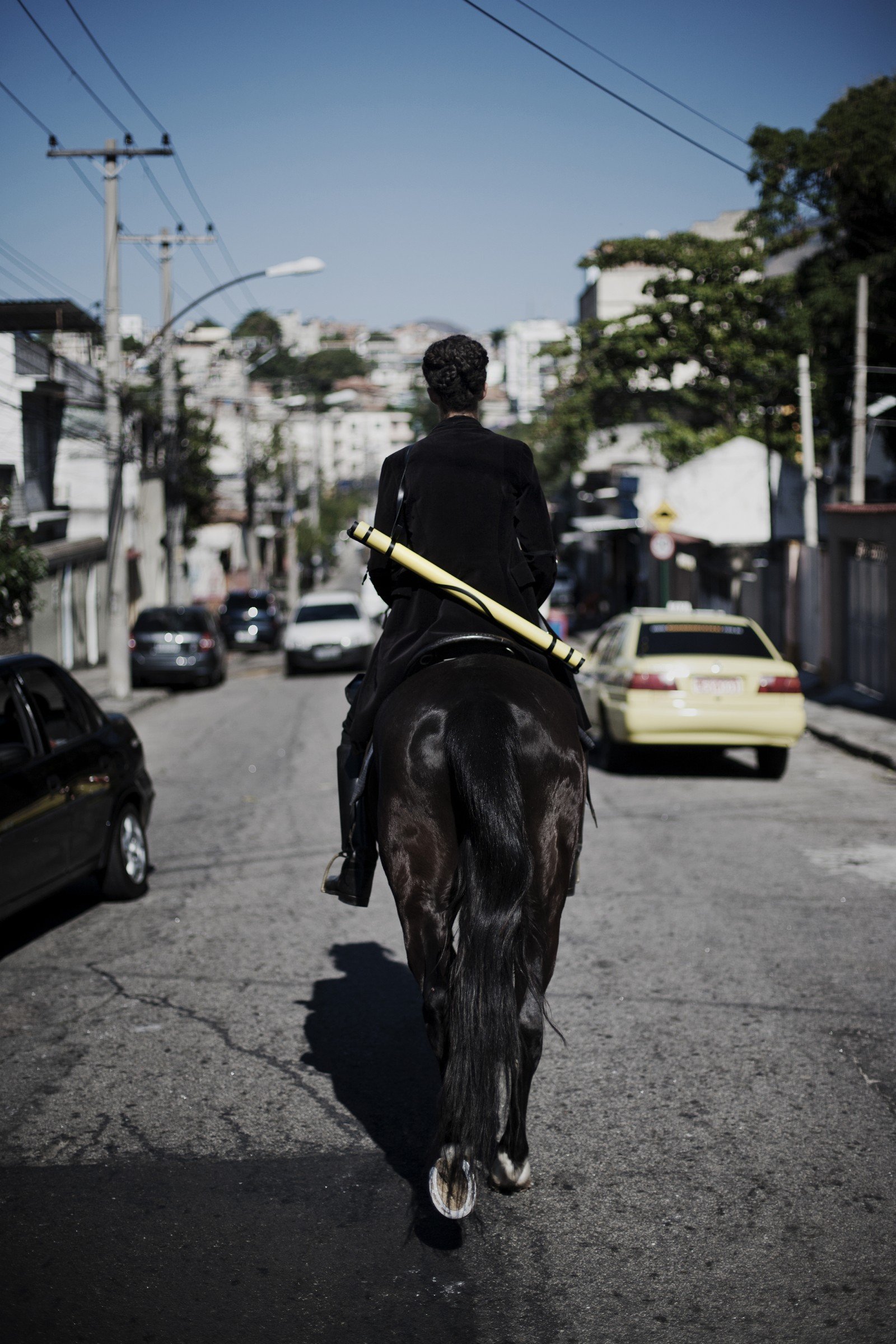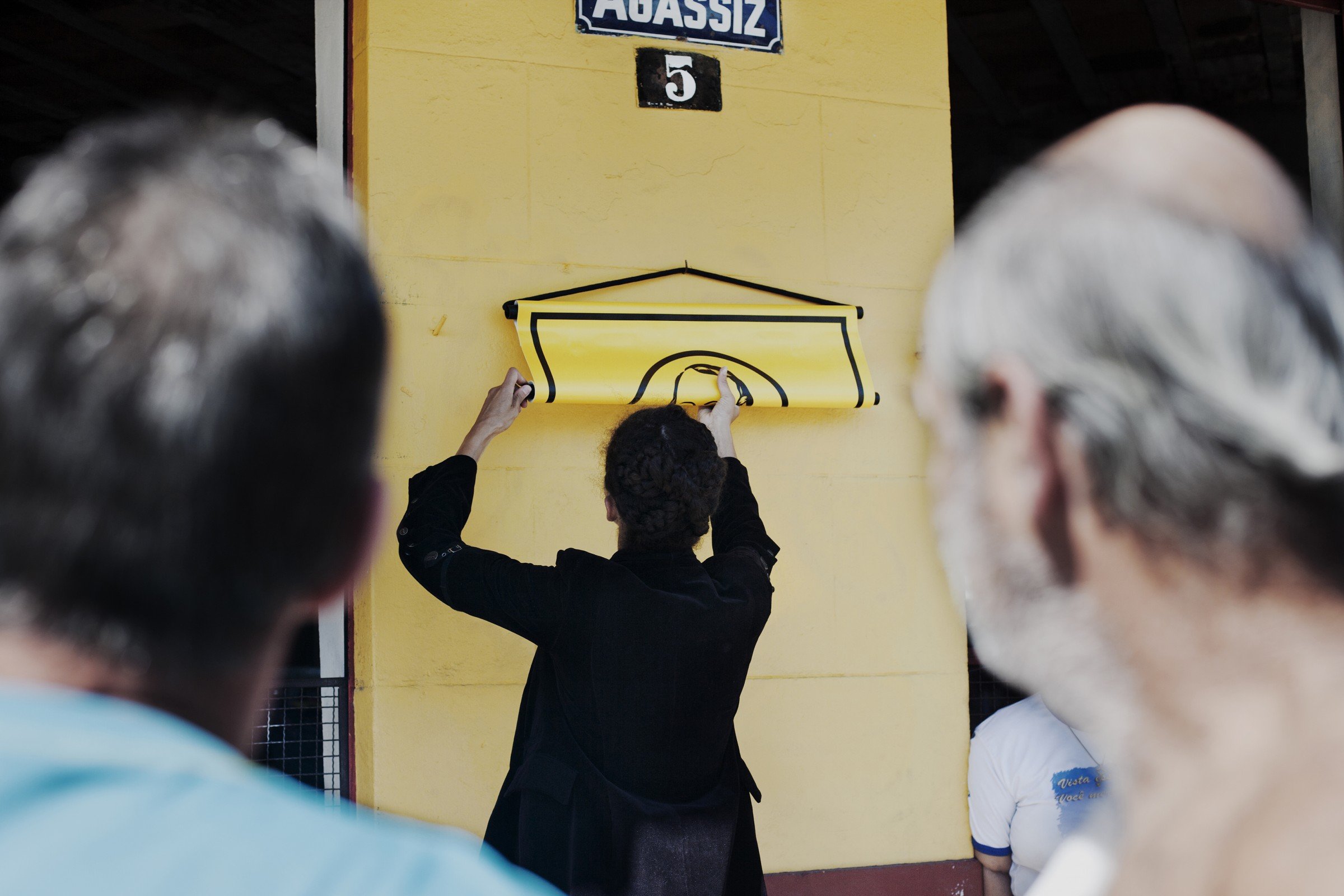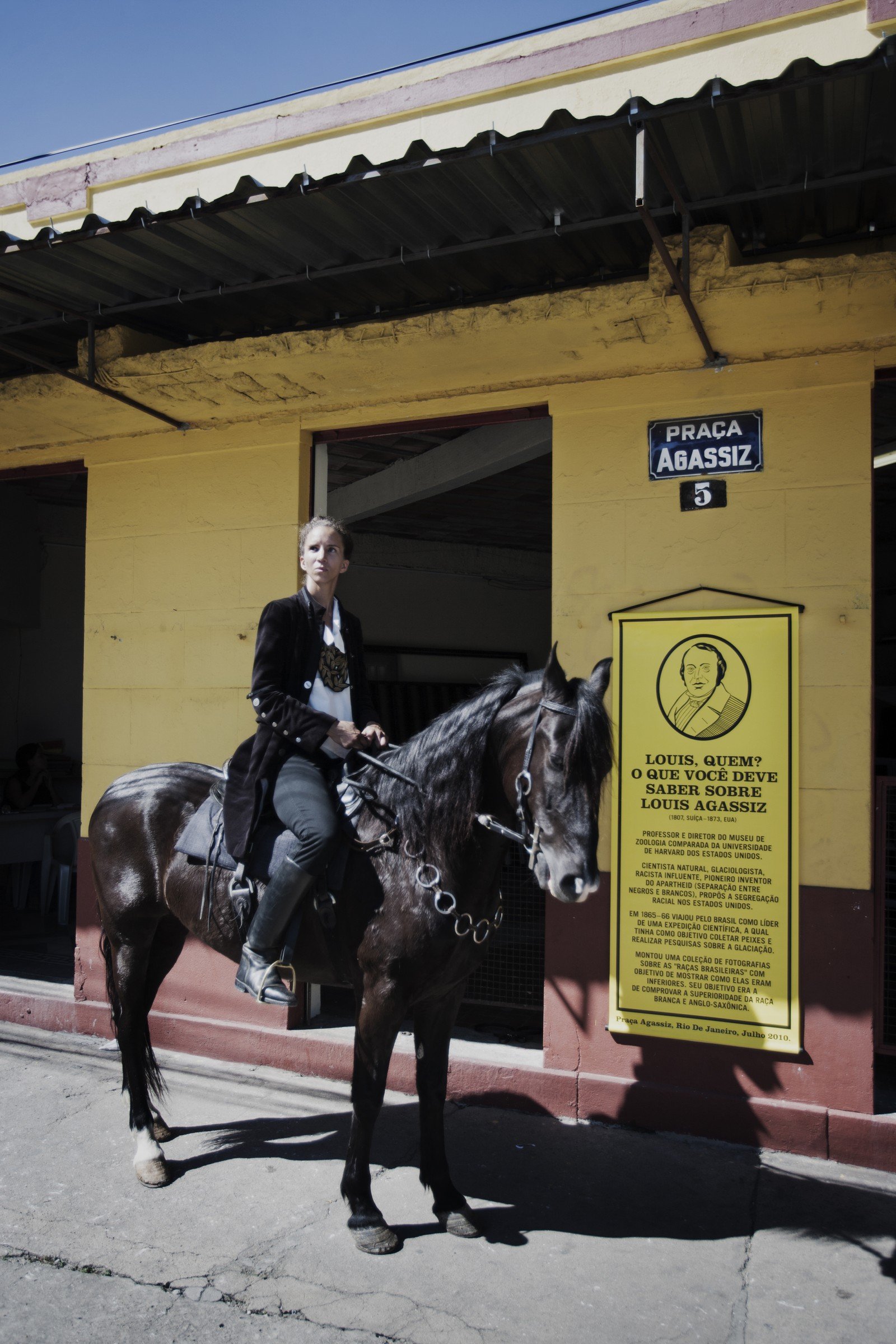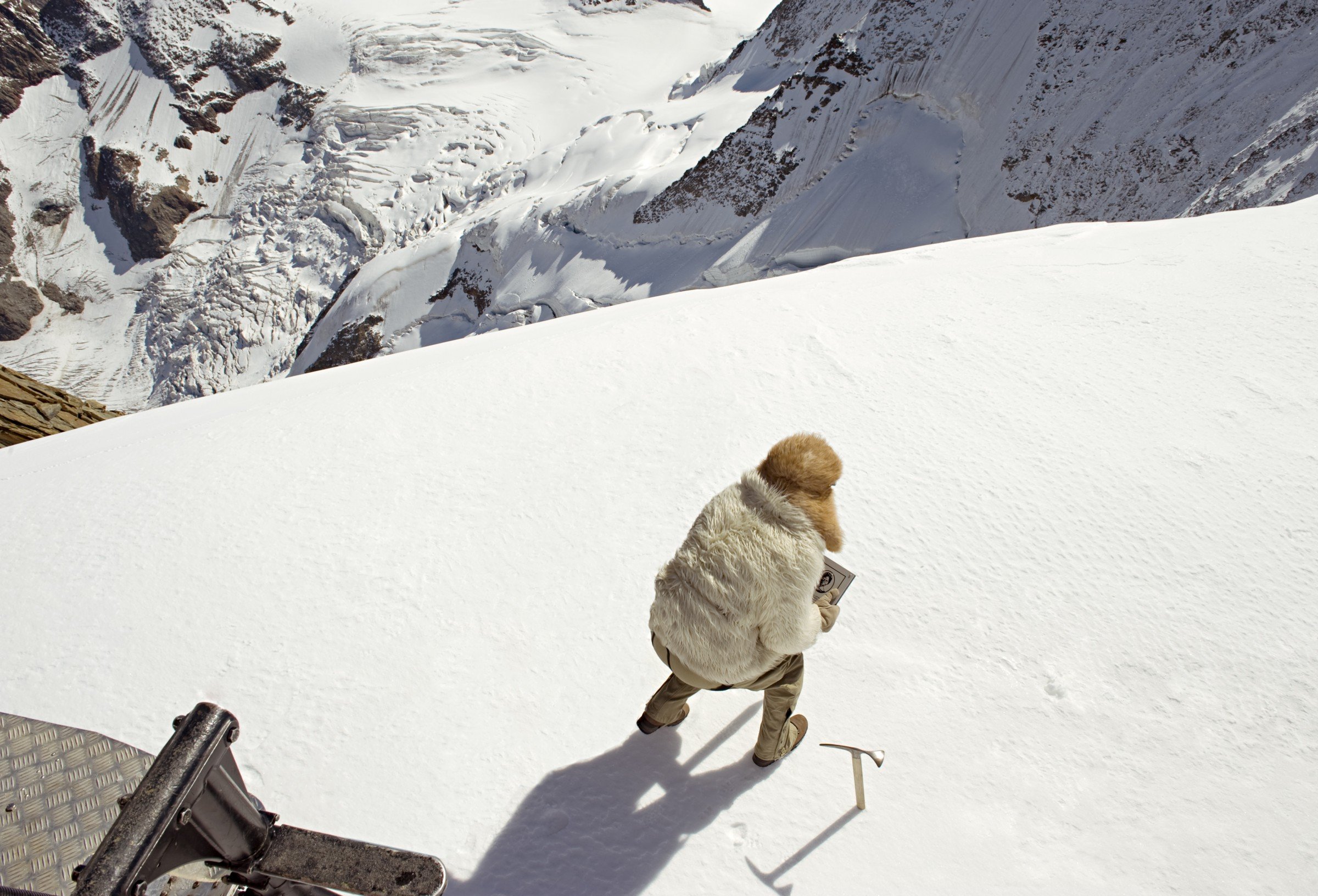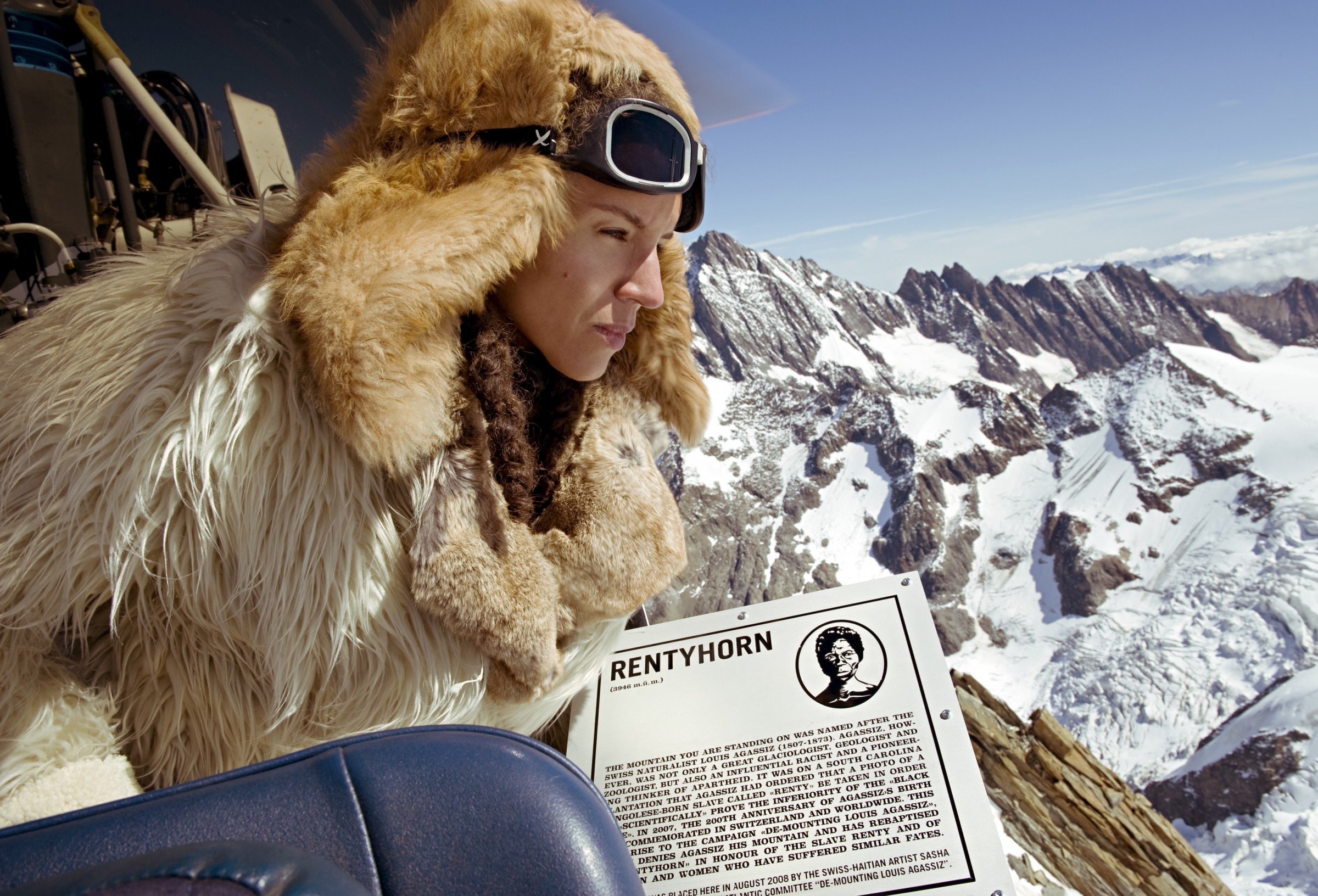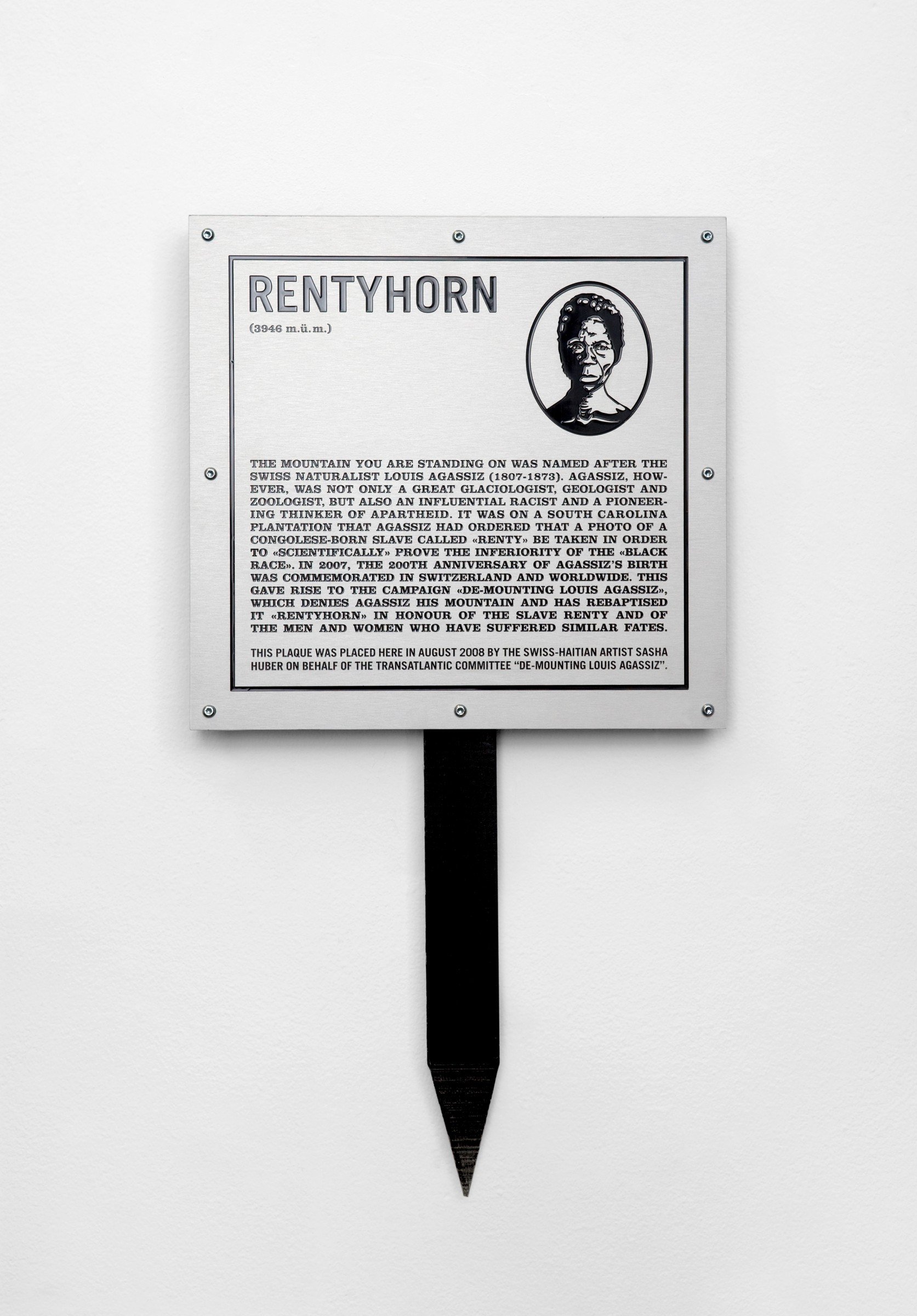Sasha Huber, Louis Who? What you should know about Louis Agassiz. Intervention, video, 3:50 min, 2010. Praça Agassiz, Rio de Janeiro. Photograph by Calé © Sasha Huber.
Sasha Huber is of Swiss-Haitian heritage. Her projects confront colonial practices that infuse the landscape and cultural memory. Sensitive to the subtle threads that connect the residues of history to the present, she draws on archival material to develop video, photographic works, and performance-based interventions.
In 2007 Huber joined the transatlantic committee Demounting Louis Agassiz, initiated by the Swiss historian and political activist Hans Fässler. This multi-disciplinary project has been concerned with unearthing and redressing the history and cultural legacies of the Swiss-born naturalist and glaciologist Louis Agassiz (1807-183), an influential proponent of scientific racism who advocated segregation and 'racial hygiene'. The committe has campaigned for the official renaming of Agassizhorn mountain peak in the Swiss Alps to 'Rentyhorn'. The name 'Rentyhorn' is a tribute to Renty - an enslaved person from the Congo who Agassiz photographed in 1850 and who is an emblematic representative of other silent and unnamed victims of racism. While the actual renaming has yet to take place Huber, in 2008, performed the first of several transformative interventions. Embarking on a private expedition she reached the top of the mountain and momentarily placed an engraved plaque of Renty in the crisp white snow. Using her voice and body to mediate the unfinished business of history Huber’s work attempts to heal environmental ruptures troubled by a colonial inheritance.
During her residency with Te Whare Hēra Huber continued her work on this larger project. In Karakia - The Resetting Ceremony (2015) Huber with Jeff Mahuika (Ngāi Tahu), a greenstone carver, set out to Agassiz Glacier in Aotearoa/New Zealand’s Southern Alps to symbolically 'un-name' and 'cleanse' the glacier of any associations Agassiz had with it.
Karakia -The Resetting Ceremony was documented and has been shown at international festivals, and exhibitions, including: Share, Cheat, Unite, curated by Bruce Phillips, Te Tuhi Art Centre, Auckland and The Physics Room, Christchurch, NZ; Mediabox, Forumbox Gallery, Helsinki, Finland; 2nd Changjiang International Photography and Video Biennale 2017, curated by Olabisi Silva, Cui Cancan and Wang Qingsong, Changjiiang Museum of Contemporary Art, China; Embedded South(s), curated by Gabriela Salgado, Zoe Butt and Uyen le, Sàn art, Ho Chi Minh City, Vietnam
Huber has participated in numerous international exhibitions, including the 56th la Biennale di Venezia in 2015, and the 19th Biennale of Sydney in 2014. She edited Rentyhorn (2010); she was co-editor of (T)races of Louis Agassiz: Photography, Body and Science, and Yesterday and Today (2010) for the 29th Biennale of São Paulo (Brazil). She is currently undertaking doctoral research on racism through the lens of art at the Department of Art at Aalto University, Helsinki (Finland).
Huber lives and works in Helsinki (Finland) and has a creative partnership with artist Petri Saarikko (founder and director, Kallio Kunsthalle, Helsinki), who joined Huber on her residency at Te Whare Hēra. Together they have been invited to artist residencies in Brazil, Sweden, Norway, Switzerland, Canada, Haiti, USA and Australia. In 2010 they began working on Remedies, an ongoing project that explores oral knowledge of traditional folk remedies passed down through families, and used to heal ailments and common dilemas. They staged performances and created videos for Huskurer Remedies (2010-11) in Sweden, and have produced locally specific versions in Aotearoa/New Zealand (while at Te Whare Hēra), in Australia (Mildura People) and in Haiti (Creole). Project booklets have been published by Labyrinth Press in Sweden (Swedish and English), and by Enjoy Public Art Gallery in Aotearoa/New Zealand (Māori and English). You can download Rongoā Remedies the Enjoy Public Art Gallery publication here.
For more information on Sasha Huber visit her website.
RELATED PAGES
Sasha Huber - Agassiz Down Under - Events
International Connections: Artist Residency Forum 2015 - Events
Petri Saarikko - Aotea it's our fault too - Events
Petri Saarikko - Kallio Kunsthalle: Ernst Collection - Events
Petri Saarikko - Mobile Kunsthalle - Events
Sasha Huber and Petri Saarikko - HEALERS: ACTION, DANCE - Events
Sasha Huber and Petri Saarikko - HEALERS: ACTION, DANCE SESSIONS - Events
